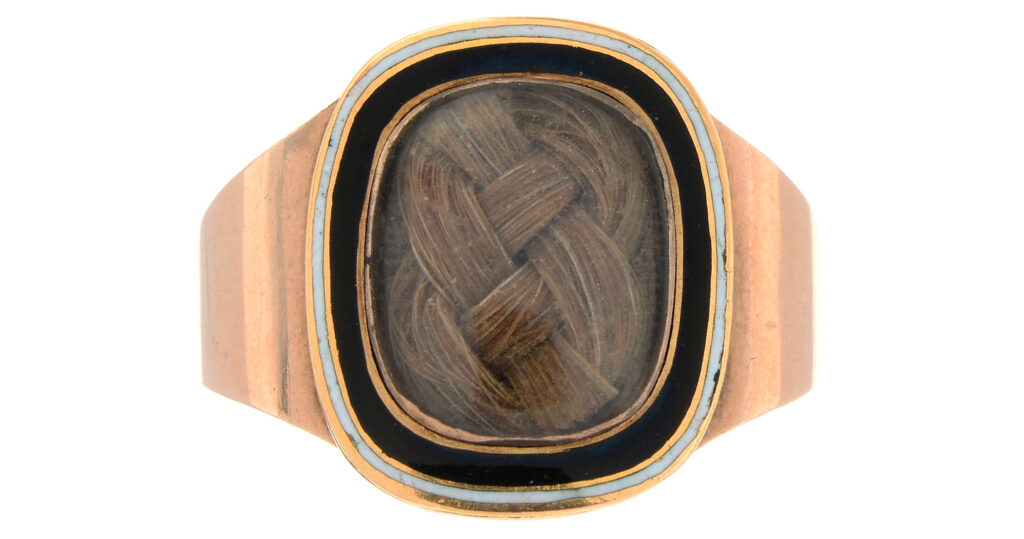Birds and Hearts: A Mourning Ring for R:R, 28 May 1727
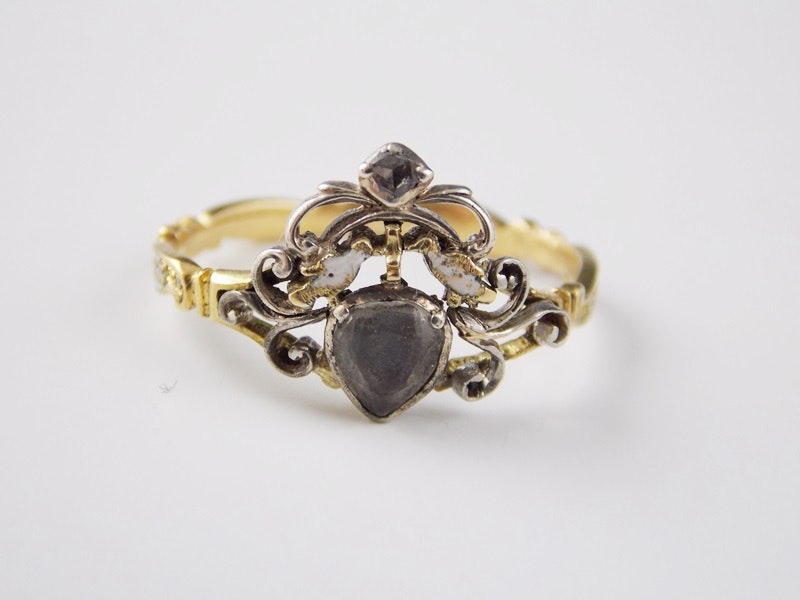
On the surface, this ring shows the simple elements of the Rococo period, which evolved the straight-edged Baroque designs from the 17th century into the typical Rococo band, which has the ribbon shape connecting to a bezel through open shoulders. What is more exceptional about this ring is that it has a confluence of symbols that were popular for the time, then combines them together to become a powerful statement of love for a departed person, who passed away at the age of 23.

White enamel is the first element that makes this ring unique. White enamel means purity and virginity, which is reserved for children and the unmarried. White enamel as a colour used in mourning had become accepted practice in the early 18th century, evolving from the standard colour of mourning in the 15th century, to be a secondary colour in mourning by the 17th century. In jewels, colour theory had largely been standardised by the 1680s, as the industry of mourning developed large enough to mass produce jewels and a rapid rate, with common wills allowing a budget for ring production when the person had passed on. In this ring, the unmarried/young person defies the standard, as the design of the ring would likely have been from the family, hence the unusual symbolism of the heart and doves.
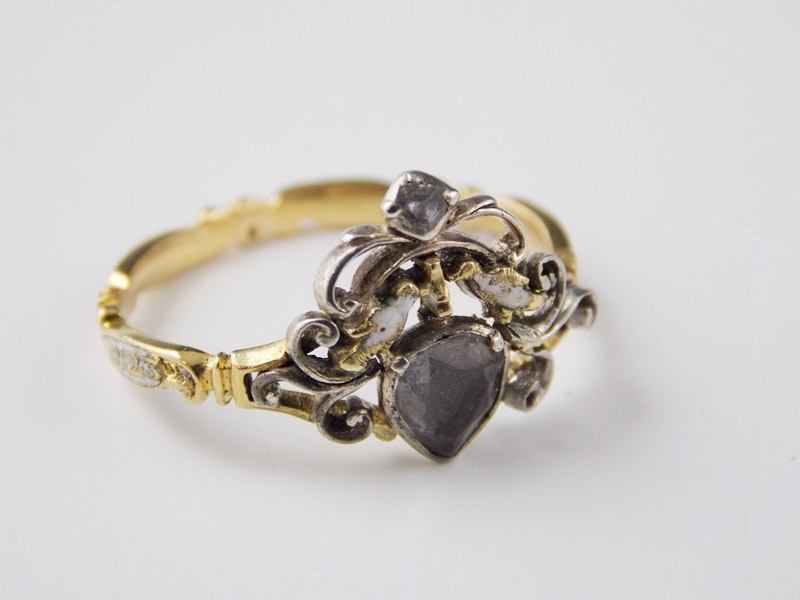
The usage of the dove, representing the Christian Holy Ghost, is a common symbol found in jewels of the 18th and 19th century. Otherwise known at the Saint Esprit dove, this symbol crosses both Catholic and Protestant symbolism due to its unbiased Christian representation. It can be worn by Protestants without any clear definition of official symbolism, but it still recognisable as being a Christian symbol. In the representation of the dove in flight within jewellery, its history is related to faith.
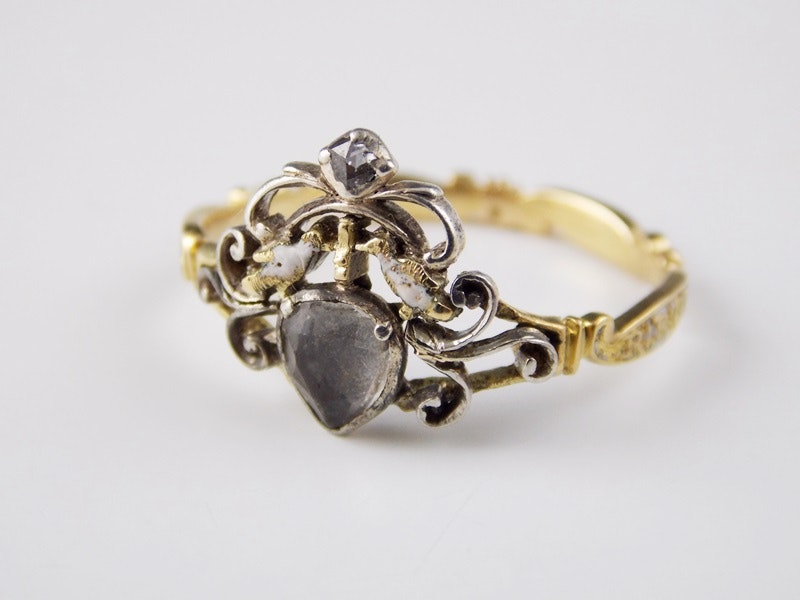
From an ecclesiastical standpoint, the dove represents the Holy Spirit, hence why it is quite commonly found in cemeteries of various Christian denominations. The white dove is referred to in the story of baptism of Christ. “And John bore record, saying, I saw the Spirit descending from heaven like a dove, and it abode upon him” (Bible, John 1:32). The descending dove is a very common motif on grave memorials. Seven doves are representative of the seven spirits of God or the Holy Spirit in its sevenfold gifts of grace. Purity, devotion, Divine Spirit. When shown with an olive sprig it means ‘Hope’ or ‘Promise’.

It should be noted that the bird in relation to a sentimental image is also important; if the bird is a dove, then it can be further detached from the subject and more inclined towards a neo-classical ideal of peace/hope/heaven, if the bird a sparrow then love (dedication, trust), if the bird is a swallow, there’s motherhood or children involved. There are many Neoclassical images of the woman holding the bird with a man looking upon her or involved with her (hand upon shoulder or body) which allude to motherhood, futurity and the prospect of a child. Many of these bird subjects often come back to the nature of the child.
When combined with the white enamel’s usage in the ring, there is the connection between the spirit and the child above the heart-shaped bezel. The deceased is framed by the symbolism, as well as the allusion to the crown in the design, which the Rococo embellishments accentuate, creating a crown in the different coloured metal wire around the heart and behind the birds. This is completed with a gem at the top of the ring, which must be tested for a diamond or to see if it is paste.
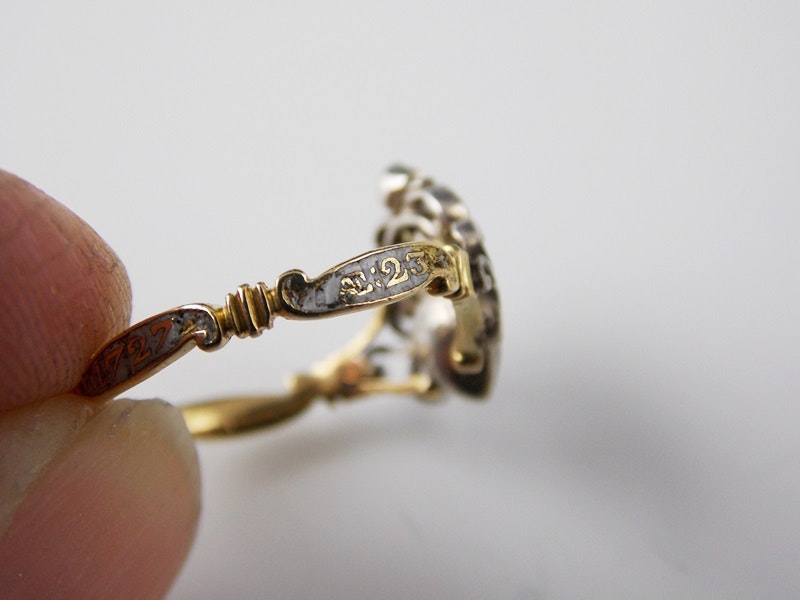
The heart was worn for a loved one who was alive, it was a symbol of betrothal, marriage or love and affection, or if dead, grief for the departed. With the rise of cupid in sentimental jewels, the heart was a popular motif from the 17th to 19th century, but one which obviously resonates just as strongly today, as the production of heart-shaped pendants and lockets is still a popular design in jewellery. The heart has its origins in jewellery from the 15th century, but was enhanced in the 17th through the Enlightenment and the reflections of the humanist movement, but could also be appropriated for religious undertones when necessary. It is important to note that the heart shape which we understand today is still reflected in these jewels with the broad element of the shape.
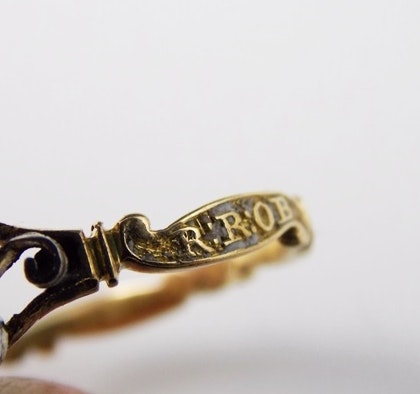
Here, the heart appears to be faceted crystal, with the hair of the loved one placed inside. The family would have this requested, as standard bands often had a paste/gem bezel with the open shoulders connecting to the scrollwork/ribbon band, which was tailored to feature the name and date of death. Crystals were popular at the time, particularly from the mid 1600s, which gives them the nickname of ‘Stuart Crystals’, due to their popularity during the reign of the Stuarts. They emulated diamonds, in that the facets would glisten in the same way for less of the cost.
What is most extraordinary about this ring is that it held so many symbols in one small jewel. The sentiment of love is pervasive throughout its intent, as is the relevance of the ring. One needs to stand back from this ring and take it into account for just what it meant during the 1727 period and how that would have had an impact on contemporary society. It is a ring that takes a person back in time and makes one understand what it was to be loved and recognised during this time, which makes it the perfect time capsule for the early 18th century.




